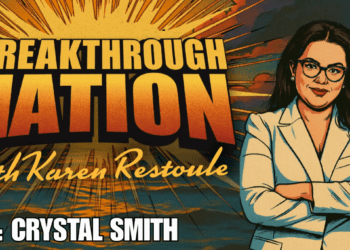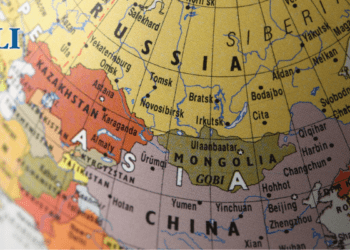 There are real democratic trade-offs to the use of this sort of regulation-making power, and more specifically the downloading of responsibility to the CRTC, writes Mark Mancini. A version of this article first appeared on the Double Aspect blog.
There are real democratic trade-offs to the use of this sort of regulation-making power, and more specifically the downloading of responsibility to the CRTC, writes Mark Mancini. A version of this article first appeared on the Double Aspect blog.
By Mark Mancini, February 8, 2022
In the spring of 2021, the federal government faced considerable backlash for its clumsy attempt at regulating Canadian content on the Internet. Bill C-10 was concerned with “compelling companies like Netflix Inc and TikTok Inc to finance and promote Canadian content.” It was controversial, not least because the law could be read to target content produced on user-driven sites (such as TikTok), thereby ensnaring individual content creators rather than the tech giants and subjecting them to discoverability requirements and penalties.
One of the biggest concerns was free expression. This law could be read to grant Canada’s telecom and broadcast regulator (the Canadian Radio-television and Telecommunications Commission or CRTC) power to regulate the content of individual expressions, something that – to many of us – presented constitutional and regulatory concerns. As University of Ottawa’s Professor Michael Geist stated upon the tabling of the bill, it “hand[ed] massive new powers …[to the CRTC] to regulate online streaming services, opening the door to mandated Cancon payments, discoverability requirements, and confidential information disclosures, all backed by new fining powers.”
Mercifully, Bill C-10 died because of the election, and some of us thought that would be the end of this story. Not so. Last week, the Trudeau government re-introduced the same pig with different lipstick: Bill C-11. It’s enough to say this Bill is generally not an improvement on its predecessor, at least from the perspective of the power it vests in the CRTC. Its central defect is failing to solve the problem with Bill C-10, and indeed making it worse, by simply allowing the CRTC to apply the law to users in certain cases. This should be, if not constitutionally problematic, then politically so. If the CRTC can apply the law to a large class of individual users, the government can evade its responsibility for this controversial choice in Parliament. In other words, the CRTC will still have the power to regulate user-generated content and subject that content to discoverability regulations, and users to potential penalties. It has this power despite the Bill being designed to obscure it.
In Bill C-11’s backgrounder, the government says this new legislation solves two problems with its predecessor, Bill C-10. First, “it captures commercial programs regardless of how they are distributed, including on social media services.” Second, “the proposed bill is also clear that the regulator does not have the power to regulate Canadians’ everyday use of social media, including when they post amateur content to these services.”
It seems, then, that the proposed bill does not apply to Canadian users or individual creators. And the opening part of the actual text of the Bill sounds promising. It says it must be construed and applied in a manner that is consistent with “(a) the freedom of expression and journalistic, creative and programming independence enjoyed by broadcasting undertakings.” Section 4.1 (1) of the Bill sounds even better: “This Act does not apply in respect of a program that is uploaded to an online undertaking that provides a social media service by a user of the service for transmission over the Internet and reception by other users of the service.” This seems to deal with the problem so many critics had with Bill C-10 when it removed key exemptions that extended its scope to include the average TikTok user.
So far, this sounds like a real improvement. But the promise fades when we consider the CRTC’s new regulation-making power. A regulation is a form of law – the power to make regulations is given to an agency by the elected legislature. This isn’t itself inherently problematic, and of course regulation-making is widespread today. But this goes further. Section 4.1(2) of the Bill basically “takes back” s.4.1(1), by giving the CRTC power to make regulations governing “programs” despite the seeming exclusion of user content. This is something approaching, if it isn’t already, a “Henry VIII” clause that allows an agency to use regulations, which are not well-scrutinized by Parliament, to amend a primary law. If not constitutionally problematic, it is politically so, since it allows the government to evade responsibility for the potentially vast scope of this law.
The clause is the central problem with this new Bill. It is cabined by a few factors – namely s.4.2 (2) (a), which directs the CRTC to consider “the extent to which a program, uploaded to an online undertaking that provides a social media service, directly or indirectly generates revenues” as it makes regulations. Based on comments made by the minister, the target here appears to be YouTube music. But there are many other types of user-generated content that could conceivably fall under the scope of the law, including user-generated TikTok videos or podcasts that indirectly generate revenue and have other features that fall within the scope of the regulation-making power.
The end result is that this technical change has the potential to ensnare countless users on various platforms. Professor Geist has summarized the wide berth of power granted to the CRTC in Bill C-11 as follows:
Views on the scope of this regulatory approach may vary, but it is undeniable that: (1) regulating content uploaded to social media services through the discoverability requirement is still very much alive for some user generated content; (2) the regulations extend far beyond just music on Youtube; (3) some of the safeguards in Bill C-10 have been removed; and (4) the CRTC is left more powerful than ever with respect to Internet regulation.
The Bill basically downloads real decision-making a level down into regulations. Rather than the government taking responsibility for regulating user content in this fashion, it instead intends to grant it to the “independent” CRTC. If there is controversy about any future regulation, the government can shift responsibility to the CRTC. The regulation-making just reinforces this, by granting power to the CRTC to expand the scope of the law and to make decisions that should fall to Parliament.
A critic could say that the statute cabins the regulation-making power, and that the income-generation factor is one, non-exhaustive factor. Perhaps. But I think I could grant all of this and still maintain that the Bill purports to grant significant power to the CRTC to apply the law to users, something the backgrounder suggests it does not. This disparity between substance and rhetoric is disconcerting.
It is important here to address another possible response. Much is made in administrative law about the need to empower regulatory experts to make decisions in the public interest. So far as this goes, the device of delegation could be useful. But it is not always and everywhere so, and there are differences in degree. A delegation to the CRTC here may be justifiable, but the government should take responsibility for the choice to regulate user content. Presumably, this should be something that – if it needs to be addressed – should be addressed in the primary law, rather than by the CRTC in its own wide, relatively unconstrained discretion. In other words, if Youtube music is the problem, the law should be appropriately tailored. And the use of something like a Henry VIII clause is ill-advised, to say the least.
The basic problem here might be more fundamental. What is the need for this Bill? It seems the regulatory goal here may be to subject the Act’s requirements to users who generate a certain income, for example, among other things. If that is the regulatory goal, why is the CRTC regulatory mechanism desirable? If the government wants to make this policy choice, why can’t it do so in plain view in Parliament?
There are real democratic trade-offs to the use of this sort of regulation-making power, and more specifically the downloading of responsibility to the CRTC. This is a controversial application of a regulatory law – with penalties – to a potentially huge class of users. Not only does the government permit by stealth what is says it has amended the Bill to prevent, but it does it here by delegating to the CRTC. I do not see this legal device, and this Bill, as any better than Bill C-10.
Mark Mancini is a PhD student at the Allard School of Law (University of British Columbia), where he studies the law of judicial review particularly as it applies to the carceral state. He is a graduate of the University of New Brunswick, Faculty of Law (JD) and the University of Chicago Law School (LLM)





